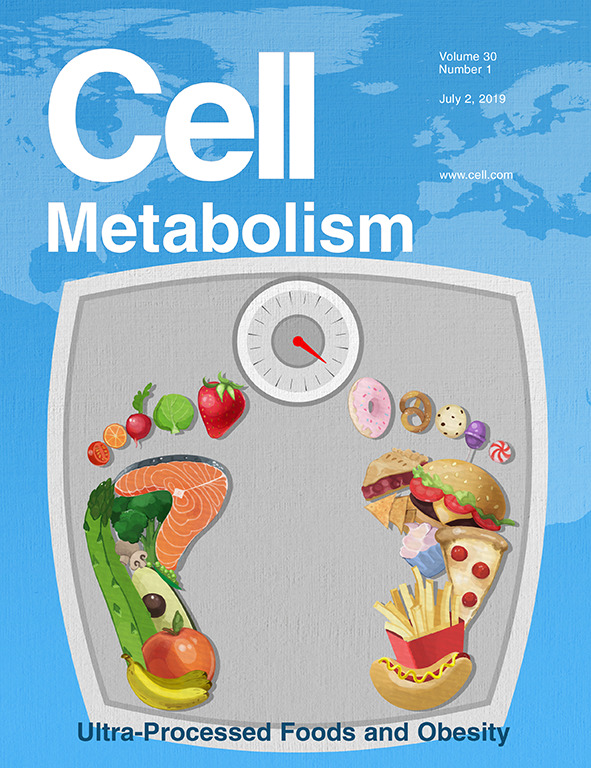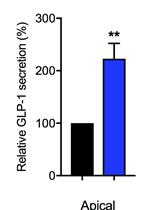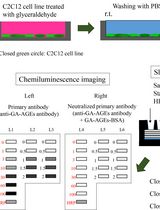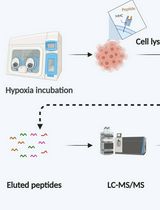- EN - English
- CN - 中文
Isolation of Tumor Cells Based on Their Distance from Blood Vessels
基于与血管距离的肿瘤细胞分离
发布: 2020年05月20日第10卷第10期 DOI: 10.21769/BioProtoc.3628 浏览次数: 5905
评审: Pilar VillacampaMarija MojicAnonymous reviewer(s)
Abstract
Differential exposure of tumor cells to microenvironmental cues greatly impacts cell phenotypes, raising a need for position based sorting of tumor cells amenable to multiple OMICs and functional analyses. One such key determinant of tumor heterogeneity in solid tumors is its vasculature. Proximity to blood vessels (BVs) profoundly affects tumor cell phenotypes due to differential availability of oxygen, gradient exposure to blood-borne substances and inputs by angiocrine factors. To unravel the whole spectrum of genes, pathways and phenotypes impacted by BVs and to determine spatial domains of vascular influences, we developed a methodology for sorting tumor cells according to their relative distance from BVs. The procedure exemplified here using glioblastoma (GBM) model is based on differential uptake of intra-venously injected, freely-diffusing fluorescent dye that allows separation of stroma-free tumor cells residing in different, successive microenvironments amenable for subsequent OMICs and functional analyses. This reliable, easy to use, cost effective strategy can be extended to all solid tumors to study the impact of vasculature or the lack of it.
Keywords: Blood vessels (血管)Background
Tumor dependence on adequate blood supply has provided a rationale for anti-angiogenic cancer therapy (Carmeliet and Jain, 2000; Vasudev et al., 2013). Traditionally attributed to provision of oxygen and other blood-borne substances, the roles of the tumor vasculature in tumor biology were recently extended to include perfusion-independent, paracrine inputs exerted by secreted endothelial-produced angiocrine factors (Butler et al., 2010; Beck et al., 2011; Lu et al., 2013), as well as via direct tumor-BV contacts mediated by reciprocal Notch signaling (Cao et al., 2014; Wieland et al., 2017). Because tumor neovascularization often fails to fully match increasing perfusion demands imposed by continual tumor growth, the relative distance of a tumor cell from the nearest perfused vessel is likely to greatly impact the nature and magnitude of vascular inputs operating through all indicated modes of tumor-BV communication. Correspondingly, differential exposures to vascular signals might facilitate emergence of certain tumor phenotypes and generate intra-tumor cell heterogeneity. To determine how vascular cells may impact tumor cells, tumor-endothelial cell (EC) co-cultures in both 2D and 3D configurations have been used (Khodarev et al., 2003; Timmins et al., 2004). However, because ex-vivo systems do not reveal perfusion-dependent effects and are also unable to recapitulate the complex interactions prevailing in the tumor microenvironment, in vivo approaches are clearly needed. The latter has thus far been limited to using EC-specific manipulations of selected candidate genes (Beck et al., 2011; Cao et al., 2014 and 2017). The need still existed for an integrative, high-throughput approach for unraveling the whole spectrum of genes, pathways and phenotypes affected by the vasculature and, moreover, a general approach to determine spatial ranges of vascular influences per each of these phenotypes.
The methodology described herein allows retrospective sorting of successive GBM tumor cells subpopulations residing at progressively increasing distances from the nearest BV and in a form suitable for subsequent transcriptomic and functional analyses. This methodology was used to understand how vasculature impacts cancer cell transcriptome and metabolome (Kumar et al., 2019). This methodology is not limited to the above two omics, but can be further extended to any other omics such as to study epigenome or methylome. If integrated with single cell RNA sequencing, this assay can help in dissecting the characteristics of tumor cells as a function of blood vessels to a very fine resolution. Of particular relevance is the existence of diverse metabolic niches within a tumor due to differential availability of oxygen and other blood-borne substances. Using this methodology we showed that the classical 'Warburg Effect', i.e., the use of aerobic glycolysis for energy production instead of the more efficient mitochondrial respiration, in fact, reflects overall summation of different metabolic niches, and that perivascular cells still actively rely on mitochondrial respiration. While there is a growing awareness of intratumor metabolic compartmentalization, and even of an interplay between different compartments, it has thus far been dealt with in a dichotomous manner of distinguishing 'normoxic' vs. 'hypoxic' microenvironments (Allen et al., 2016). Considering, however, existence of intermediate states shaped by the perfusion gradient and by differential exposure to angiocrine factors, our study showed that there is a continuum of diverse microenvironments. Ability to isolate such tumor subpopulations should aid in addressing open issues pertinent to the highly complex BV-tumor interplay. We believe this methodology can also be extended to other solid tumors too, as there exist an unveven distribution of vascular supply in most of the different types of solid tumors.
Materials and Reagents
- T75 flasks
- 70 µm filter
- Suturing thread and needle (Ethicon, catalog number: SXMD1B105 )
- Alcohol pads (Medi Plus, catalog number: KPN1528 )
- Insulin syringe, 31 G, 0.5 ml (Insumed, Pic solution)
- GentleMACS C Tube (GentleMACSTM, catalog number: 130-093-237 )
- Mice (NOD/SCID, 8-10 weeks old, Male mice used in this particular study)
- Human origin glioblastoma cell line–U87MG (ATCC, catalog number: HTB-14TM)
- pLenti CMV GFP Puro (Addgene plasmid, catalog number: 17448 )
- Dulbecco’s Minimal Essential Medium (DMEM) High Glucose (Biological Industries, catalog number: 01-055-1 )
- Sodium Pyruvate (Biological Industries, catalog number: 03-042-B )
- L-Glutamine (Biological Industries, catalog number: 03-020-1B )
- Fetal Bovine Serum (Biological Industries, catalog number: 04-001-1A )
- Penicillin-Streptomycin solution (Biological Industries, catalog number: 03-031-1B )
- Trypsin EDTA Solution (Biological Industries, catalog number: 03-050-1A )
- Phosphate buffered saline (PBS) (Biological Industries, catalog number: 02-020-1A )
- 2% Chlorhexidine solution (Ecolab, catalog number: 3059670 )
- Ketamine (Clorketam, Vetoquinol)
- Rimadyl (Carprofen, catalog number: 141-053 )
- Eye-ointment (Pharmaderm, catalog number: 17033-211-38 )
- Xylazine (Sedaxylan, Eurovet animal health).
- Ketamine-Xylaxine mixture, 140 mg/kg of Ketamine mixed with 10 mg/kg body wt of mice
- Saline (Braun, catalog number: Ecolav PE Bottle 30 ml )
- Hoechst 33342 (Sigma-Aldrich, catalog number: B2261 )
- Rat anti-mouse CD31 Antibody (BD PharMingen, catalog number: 555027 )
- Donkey anti-rat Cy5 (Jackson ImmunoResearch Laboratories Inc., catalog number: 712-605-153 )
- Trypan blue (Sigma-Aldrich, catalog number: T8154-100ML )
- Isoflurane (TerrellTM, Piramal)
- Tumor dissociation kit (Miltenyi Biotec, catalog number: 130-096-730 )
- RNeasy Mini Kit (Qiagen, catalog number: 74104 )
- FACS buffer (see Recipes)
- Vascular perfusion dye (see Recipes)
- Enzyme mix (see Recipes)
Equipment
- Sterotactic machine (Stoelting, catalog number: 51500D )
- High speed drill with drill bits (Stoelting, catalog number: 51555 )
- Surgical instrument set (World Precision Instruments, catalog number: 503407 )
- Sterotactic syringe (Hamilton, catalog number: CAL80301 )
- Tissue Dissociator (GentleMACSTM, catalog number: 130-093-235 )
- Fluorescent microscope (Nikon, model: SMZ25 )
Procedure
文章信息
版权信息
© 2020 The Authors; exclusive licensee Bio-protocol LLC.
如何引用
Kumar, S., Sharife, H., Kreisel, T., Bar-Lev, L., Grunewald, M. and Keshet, E. (2020). Isolation of Tumor Cells Based on Their Distance from Blood Vessels. Bio-protocol 10(10): e3628. DOI: 10.21769/BioProtoc.3628.
分类
癌症生物学 > 微环境 > 低氧
细胞生物学 > 细胞新陈代谢 > 糖类
生物化学 > 糖类 > 葡萄糖
您对这篇实验方法有问题吗?
在此处发布您的问题,我们将邀请本文作者来回答。同时,我们会将您的问题发布到Bio-protocol Exchange,以便寻求社区成员的帮助。
Share
Bluesky
X
Copy link












